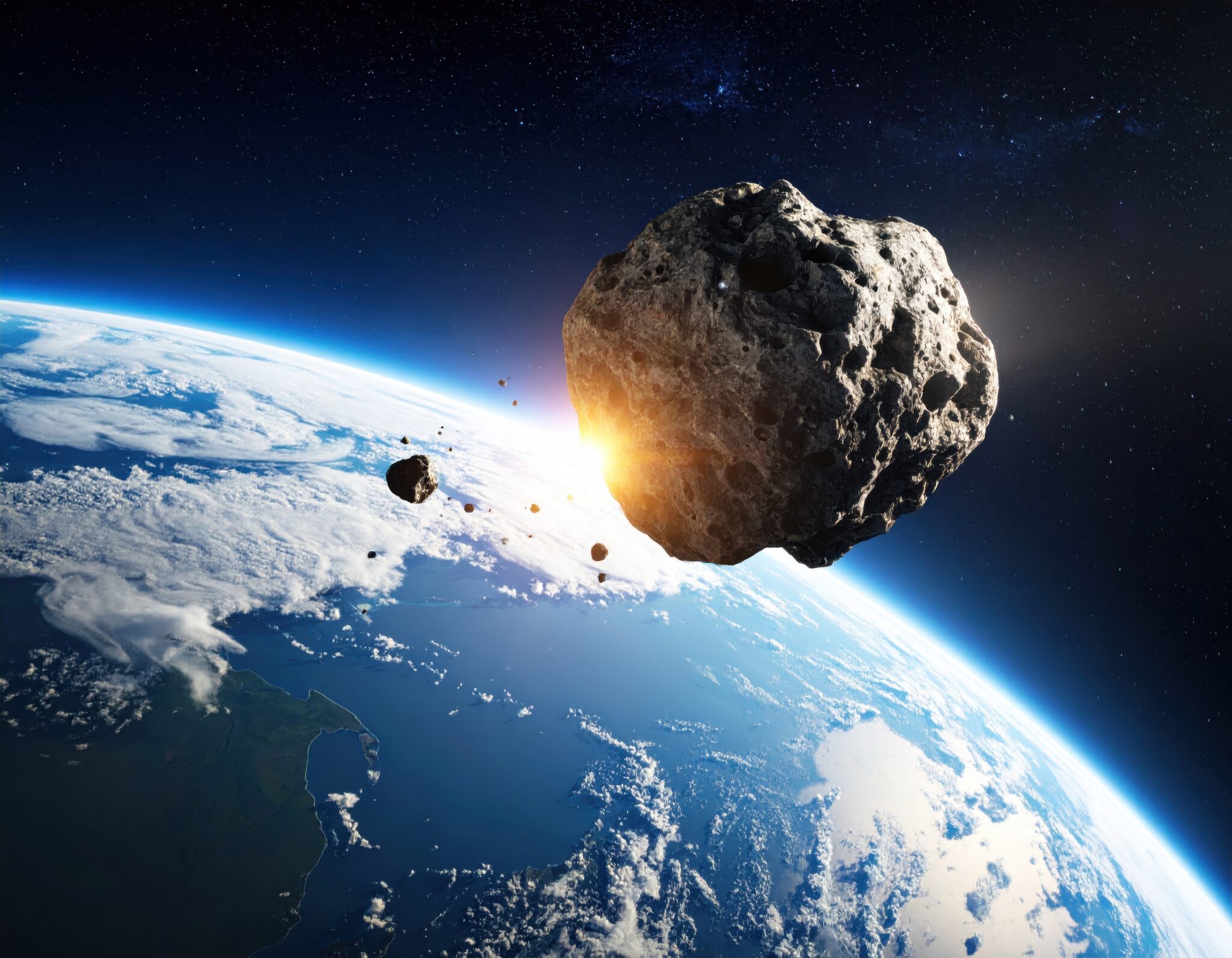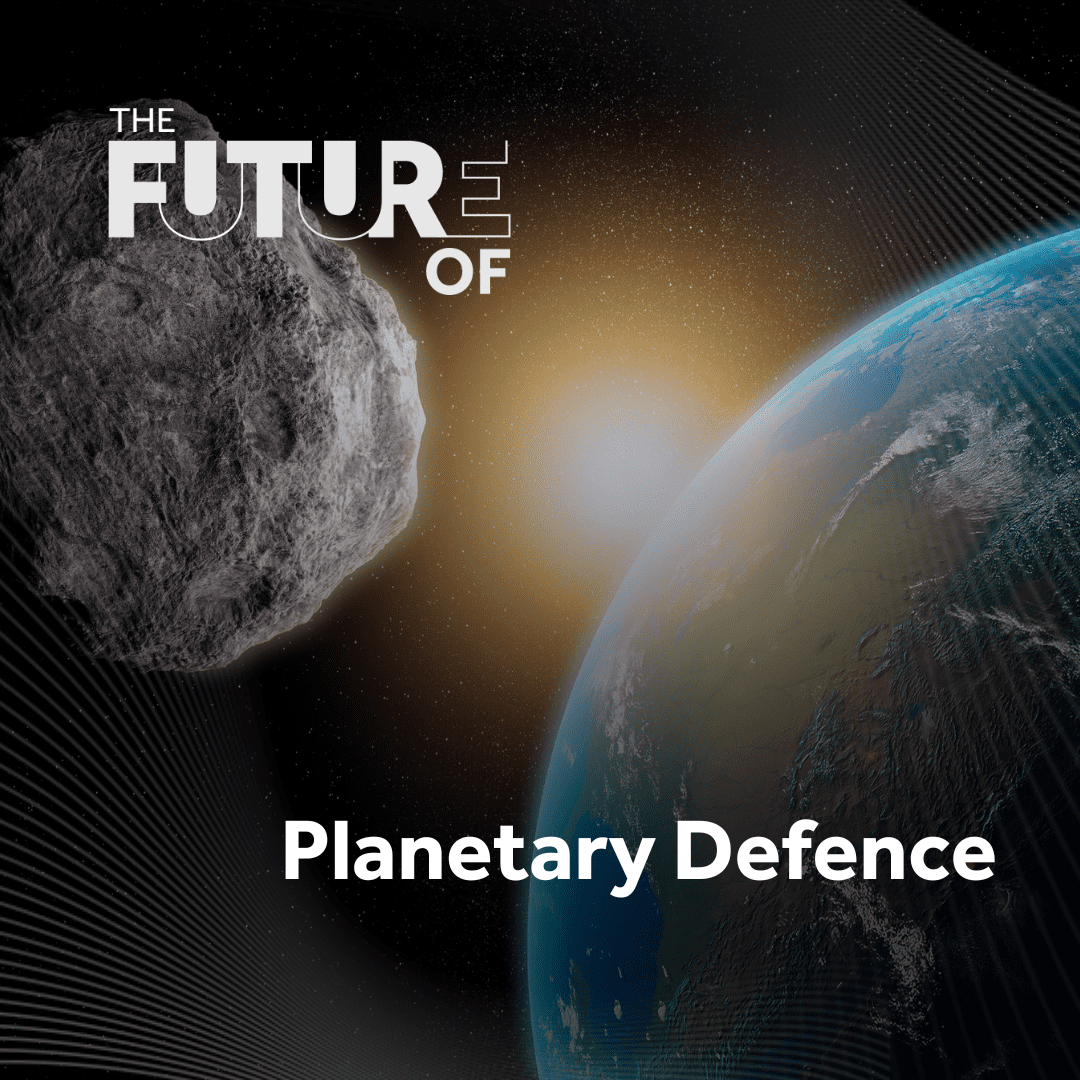Keen to hear the whole story?
From details into the fast-approaching Apophis asteroid to the memorable Mother’s Day meteorite, there’s much more to uncover. Listen to The Future Of Planetary Defence wherever you stream podcasts.

Earlier this year, an asteroid was briefly predicted to have more than a 3% chance of colliding with Earth, the highest impact risk ever recorded for an object of its size.
That chance has since dropped to below 1%. But what if next time, it doesn’t?
That question is front of mind for Associate Professor Nicholas Timms and Professor William Rickard – Curtin University scientists who analyse the enigmatic extraterrestrial materials that might one day set sail for Earth.
Nick, an expert in rock and mineral deformation and geochronology, and Will, Director of Curtin’s John de Laeter Centre, joined us for our latest podcast episode, The Future Of Planetary Defence. Here’s a snippet of their fascinating conversation.
Nick: There’s quite a big list of potentially hazardous asteroids in space. These are near-Earth objects in our solar system that have Earth-crossing orbits, or at least come very close to Earth.
Planetary defence involves identifying these potentially hazardous asteroids and near-Earth objects, understanding them, and then mitigating their risks.
Once we identify a potentially hazardous asteroid, our goal is to redirect it, or nudge it out of the way, so it doesn’t cause a problem for life on Earth as we know it.
Nick: A few missions have ventured to some of these near-Earth objects to collect samples and bring them back to Earth.
Recently, NASA coordinated the OSIRIS-REx mission to asteroid Bennu, which returned the largest sample of an asteroid ever collected by far.
A Curtin team was privileged enough to be mission scientists on the OSIRIS-REx mission. We had the honour of diligently analysing some very small particles of this precious asteroid material.
Photos of the landing, transfer and initial processing of the samples collected from NASA’s OSIRIS-REx mission. Source: NASA
Will: The teams responsible for bringing samples back to Earth – whether it be NASA or Japanese, Chinese and European space agencies – want to get the most information from the smallest amount of material while doing the least amount of damage.
To achieve that with these precious samples, you need state-of-the-art instrumentation – the kind we have at Curtin University’s John de Laeter Centre.
We use a wide range of tools, including optical microscopes, electron microscopes, X-ray analysis equipment, laser equipment and mass spectrometry. We’ve designed a workflow where we can go from analysis at the macro scale, all the way down to the atomic scale.
Through specialised techniques, such as atom probe tomography, we can extract the atoms of a sample, almost one by one, and reconstruct them in three dimensions. This analysis helps us understand a sample’s chemistry, microstructure and isotopic composition. That information can tell us how old the sample is, its provenance, and more about the parent body from which this material originated.
Will: At the John de Laeter Centre, we don’t get these samples because we put our hands up – these samples come to us because we have a sought-after combination of world-class experts from Earth and Planetary Sciences and world-class instrumentation.
That combination of know-how and tools is why we’ve built a strong reputation in the past, and why we’re chosen to get involved in these missions today.

Nick: We can learn a lot about the properties of an asteroid from sample analysis. It can tell us the strength of the material, how it will react to different deflection technologies and so on. Feeding these insights back into planetary defence strategies is critical.
Will: It’s important to note that while there’s a lot that we know about extraterrestrial bodies, there’s also a lot that we don’t. For example, when NASA’s ORSIS-REx mission went to collect samples from asteroid Bennu, they expected to land on a solid surface – but that wasn’t the case.
The asteroid had the material properties of a bowl of popcorn – you could probably put your hand straight through it. When ORSIS-REx’s touch-and-go mechanism landed on Bennu, it displaced about six tonnes of material. The spacecraft’s thrusters just blew it all away.
So, what we thought we knew was completely wrong.
In terms of planetary defence, putting a nuclear bomb in something that’s almost a rubble pile is probably not going to work. That’s why understanding the material properties of these asteroids helps us create a mitigation strategy.
Will: In terms of who is responsible, some international bodies are investigating this topic as we speak.
If we do identify a hazardous asteroid, it will require a huge effort from many countries to apply a successful defence strategy. There’ll be teams using remote sensing to try and understand its properties and then link that with existing studies on samples that have returned from similar types of objects – such as some of the work we’ve done at the John de Laeter Centre.
Next, we’d coordinate a mission and fly something to the asteroid. Hopefully, using an informed approach, we could create a strategy to deflect the asteroid safely.
Whether we’re united in principle or practice is a big question – what happens when a planetary defence mission requires a massive financial investment? It’s an interesting and evolving topic.
Nick: I agree with Will that it’s an international problem that will require a global solution, and cooperation all the way.
Curtin PhD students just recently attended an international planetary defence conference in South Africa. At the conference, they were trying to address these same questions.
They were asking, “Whose responsibility is it?”, “What if we deflected an asteroid to another country?”, and “How do we deal with planetary defence?”. These are some of the really interesting problems that come alongside the scientific complexities of deflecting asteroids and changing their course.
For now, we need a coordinated and large-scale effort to develop more missions and test technologies to figure out the best option for planetary defence when the time comes. And I think most people agree that nuking asteroids and other near-Earth objects is not a good option at all.

Nick: Increased space missions, specialised instrument development and machine learning are all shaping the future of planetary defence.
Until now, we haven’t had access to much extraterrestrial material; however, we’re entering a new era of space travel and exploration. SpaceX and many other companies are accelerating their capabilities to go back to the moon and far beyond it. This means it might be possible to bring a lot more material back from these missions in the near future.
That links to a challenge that we scientists are having, which is actually how time-intensive material analysis can be. Incorporating things like machine learning and automation into painstakingly manual processes will help improve the volume of analysis we can complete.
Finally, over my career in geosciences and planetary sciences, I’ve seen fantastic advancements in our instrumentation. In the past, we developed a specific type of ion microprobe – called a SHRIMP – to look at lunar samples. This kind of specialised instrument development is exciting for our future.

From details into the fast-approaching Apophis asteroid to the memorable Mother’s Day meteorite, there’s much more to uncover. Listen to The Future Of Planetary Defence wherever you stream podcasts.